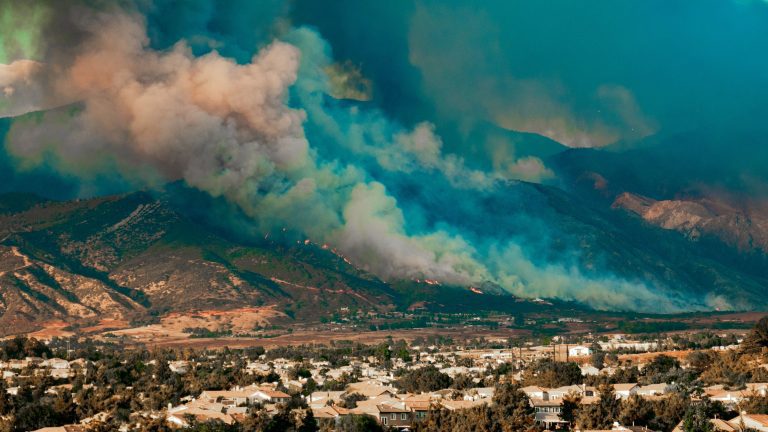Key Takeaways
- Optics in environmental monitoring is vital, enabling water quality checks, greenhouse emissions tracking, and pollutant analysis.
- Techniques like pulsed laser fluorescence and spectroradiometry monitor ocean health and phytoplankton blooms.
- SWIR imaging aids wildfire control by tracking moisture and detecting hotspots. Thermal imaging helps firefighting in smoky or dark conditions, while UAV-based SWIR imaging assists post-wildfire recovery.
- Optical biosensors offer real-time pollution monitoring with biological elements and optical transducers, providing early warnings of harmful chemicals. Avantier produces custom optical solutions for these applications.
Optics in Environmental Monitoring: Techniques and Applications
Optical metrology is a powerful tool in environmental monitoring. It enables us to monitor water quality, track greenhouse emissions and analyze potential pollutants in soil. It is the key to many types of oceanographic research as well as contamination monitoring. In some situations— for instance, when analyzing nuclear waste— even tiny amounts of toxic chemicals can be catastrophic. Optical metrology solutions provide us with the ability to monitor even low concentrations of problematic substances. This gives us a real-time understanding of what is happening over multiple locations.
Environmental uses of optics aren’t limited to metrology. Plastic recycling, wastewater treatment, and solar energy production also involve optics. At Avantier, we produce optical components for all of these applications. In this article we’ll focus on the environmental metrology applications of some optical devices, and take a closer look at just how they work.
Remote Monitoring of Ocean Algae
Half of the oxygen produced on our planet is produced by the ocean, and human health is intrinsically bound up in the health of our seas. But the oceans are immense bodies of water, and our direct contact with many parts of them is limited. How can we monitor the oceans without taking direct samples of seawater or oceanic flora?

Pulsed laser fluorescence can be used to monitor the health of coral reefs from satellites and UAVs. Since symbiotic algae and chlorophyll have fluorescence peaks at 585 and 740 nm, they can be detected remotely and areas with problematic algae growth can be flagged.
Intense phytoplankton blooms are an oceanic phenomenon that not only has a negative influence on human health but also harms ocean ecosystems. With spectroradiometry that covers the range 360-100nm, researchers can elucidate spectral data that provides early information of a phytoplankton bloom.
Optics for Wildfire Control
Wildfire control begins before the fires themselves do. One important ‘phase 0’ activity is the monitoring of moisture levels over wide swaths of wild land or farmland. Today, this is usually accomplished with SWIR imaging, since SWIR light absorbs water. The SWIR1 band of light is particularly sensitive to moisture and can provide an accurate picture of moisture content in the soil and vegetation.
What about if you have something smoldering under the overgrowth? Thermal imaging is capable of locating hot spots where a fire is about to break out before the first flame has emerged. This enables firefighting personnel to eliminate disasters before they begin.

During a wildfire, thermal imaging SWIR imaging can be used to view terrain obscured by smoke or darkness. This is key to the location and guidance of firefighting efforts and can enable specialists to determine exactly what is happening on the ground. Imaging apparatus may be installed on specialized drones, on small manned aircraft, or used by teams on the ground.
After a wildfire, UAV-based SWIR imaging provides a comprehensive view of vegetation growth. This enables ground crews to plan future efforts and determine where to prioritize reforestation.
Optical Biosensors for Pollution Monitoring
Traditional methods used to monitor pollution involved sophisticated techniques based on chromatographic and spectroscopic technology. These methods can be time-consuming and require highly trained personnel. Today, there’s a new method for pollution monitoring gaining ground. Optical biosensors offer real-time, on-site information about pollution levels. The signals they produce are designed to be readable by anyone.

Optical biosensors consist of a biological sensing element (an enzyme or antibody) and an optical transducer. Target molecules interact with the biological sensing element, and this interaction ultimately produces a measurable electrical system. Highly sensitive biosensors can give early warning of problematic chemicals that might have an adverse affect on the environment. Alternately, they can be used to provide an alert when levels of known pollution rise above a certain level.
Avantier and Optical Techniques
Avantier specializes in creating custom optical solutions that meet all our customer’s needs. The field of optics in environmental monitoring and optical metrology is no exception. From micro-optics to large scale imaging optics for satellite-based monitoring, we have you covered. Please contact us today to discuss your options or set up an initial consult.
GREAT ARTICLE!
Share this article to gain insights from your connections!







